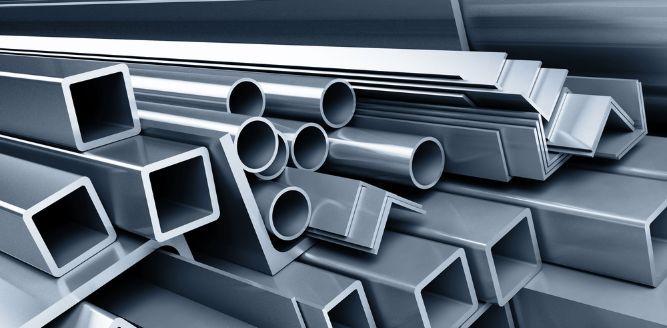
Did you know that there are over 3,500 different types of steel? Or that more than 1.6 billion tons of steel are produced worldwide each and every year? If you're not involved in the steel production industry, you may not be aware of how diverse and prevalent this metal truly is. But that doesn't mean it's not all around you all the time. From cutlery to railroad tracks and from auto parts to medical equipment, steel is literally everywhere you look.
Steel is a metal that consists primarily of iron but also contains other alloying elements. Simply put, this means that steel is just iron mixed with small amounts of one or more other elements/metals. These can include carbon, chromium, nickel, copper, aluminum, and many more.
Steel is defined by the elements it contains, as well as by the methods used to heat and cool it during manufacturing. There are four main classifications of steel alloys (Carbon Steel, Stainless Steel, Alloy Steel, and Tool Steel), but also many sub-groups. Each type of steel has its own unique properties that render it ideally suited for specific purposes. Read on to find out what type of steel may be suitable for the next project you have in mind.
Technically, all steel contains carbon. But carbon steel contains only carbon and iron. All other elements are almost entirely absent, which makes it a simple yet effective product. Carbon steel is adaptable and relatively inexpensive. It accounts for roughly 90% of all steel production and is used in a wide range of applications, depending on the carbon concentration it contains.
Low Carbon is the most common and least expensive of the carbon steels. It’s highly ductile, meaning it’s able to be stretched and strained without losing strength. This makes it an ideal material for products like wires as well as oil and gas pipelines.
Medium Carbon steel grades have higher carbon content, which gives them higher strength and lower ductility than low carbon steel. They are found in products like gears and railroad tracks.
High Carbon steel grades contain more than 0.61% carbon but less than 2%. (Above 2% carbon content is categorized as cast iron.) These are used to produce very sharp and tough items like brick nails and trencher blades.
You might be familiar with stainless steel because of your fridge, dishwasher, or dryer. But stainless steel has a wide range of functions well beyond the scope of your home appliances. It’s flexible, easily manipulated, and corrosion-resistant. For these reasons, it’s used for everything from surgical equipment to exterior cladding on commercial buildings. There are over 100 grades of stainless steel, and each is used for its own specific purposes.
What distinguishes stainless steel from other steels is the presence of chromium as the main alloying element. Stainless steel contains roughly 10-20% chromium and this is what gives it its characteristic shine. The higher the chromium content, the glossier the steel.
Stainless steel grades vary depending on what other elements are present in them and in what quantities (most commonly nickel and carbon). Also significant are the specific manufacturing techniques, like rapid cooling or other heat treatments. The four main subcategories of stainless steel are Martensitic Alloys, Ferritic Alloys, Austenitic Alloys, and Duplex Alloys. Each subcategory has its own unique properties that make it ideally suited for specific applications.
To learn more about which stainless steel grade may be right for your purposes, talk to a reputable metal supplier.
While all steels are technically alloys, alloy steel is the name given to alloys other than those produced with carbon (carbon steel) or chromium (stainless steel). Over time, more and more types of alloy steel are emerging. They are highly versatile, and many of them are proving to have desirable qualities that make them perfectly suited for everything from standard manufacturing to highly technical equipment.
Some of the more common alloy steels include nickel, copper, and aluminum. More recently, however, alloys including elements like manganese, molybdenum, vanadium, and even silicon have also emerged.
There's not much mystery when it comes to the main function of tool steel: It’s used to make tools - and even to make the manufacturing machinery that makes tools and other equipment. Tool steel is created to withstand high impact and heat treatment. It’s often tempered (heated, cooled, then quickly heated again) to increase durability.
Different types of tools require different tool steel types. Depending on the tool steel type, other processes during manufacturing may include air-hardening, water-hardening, oil-hardening, hot-working, and more.
As it turns out, steel is highly regulated and standardized around the world. This means that the quality and integrity of steel you select should be guaranteed to meet your needs. There are two grading systems for steel: The ASTM (American Society for Testing and Materials) and the SAE (Society of Automotive Engineers). Both classify steels according to their makeup and attributes.
That being said, a qualified metal supplier will best be able to help you navigate the world of steel as you make the selections for your particular project.
New West Metals is family-owned and 100% Canadian, with an outstanding reputation for customer service. Now that you know how much there is to know about steel, let the experts at New West Metals guide you along the way.






